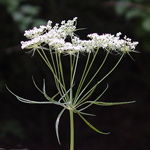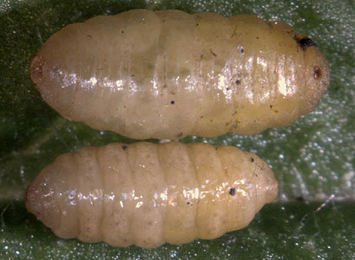|
||||||
|
AMMI. Bullwort and Toothpick-plant. [Apiaceae] |
|
|
Two species of Ammi, Bullwort (A. majus) and Toothpick-plant (A. visnaga), are recorded in Britain. Both are introduced. Two British miners are recorded on Ammi. A key to the European miners recorded on Ammi is provided in Bladmineerders van Europa. |
 Bullwort Ammi majus |
Key for the identification of the known mines of British |
1a > Leaf-miner: A large blotch, yellow or brown, preceded by a short corridor that in the end mostly is completely overrun. Generally several larvae share a mine. Especially in fresh mines the green primary and secondary feeding lines are well visible. Pupation outside the mine. Hering (1957a) warns that the mines cannot be separated from those of the rare Cryptaciura rotundiventris. Mine is deep and leads to a blotch, which is usually coloured yellow or brown (British leafminers) |
 Euleia heraclei pupariria Image: © Willem Ellis (Bladmineerders van Europa) |
|
Euleia heraclei (Linnaeus, 1758) [Diptera: Tephritidae]. |
1b > Leaf-miner: A distinctive mine primarily above mid-rib, with irregular short lateral offshoots into leaf blade. Pupation external (Spencer, 1972: 51 (fig. 172), 55; Spencer, 1976: 270, 271 (fig. 486)). Branched, whitish, upper-surface corridor; main axis overlying the midrib; side branches overlying the main lateral veins. (In Campanula and Phyteuma the mine is much less branched, sometimes nothing more than a corridor on top of the midrib). Frass in rather long strings. Usually the mines begins as a long and narrow, shallow, tortuous lower-surface corridor that ends upon the midrib but otherwise is not associated with the leaf venation. Often this initial corridor is filled with callus, and then even less conspicuous. Pupation outside the mine. A linear mine on the upper surface, usually following the midrib and showing side branches along the veins. The frass is in strings. |
|
Liriomyza strigata (Meigen, 1830) [Diptera: Agromyzidae]. |
| Last updated 30-Jun-2019 Brian Pitkin | ||
